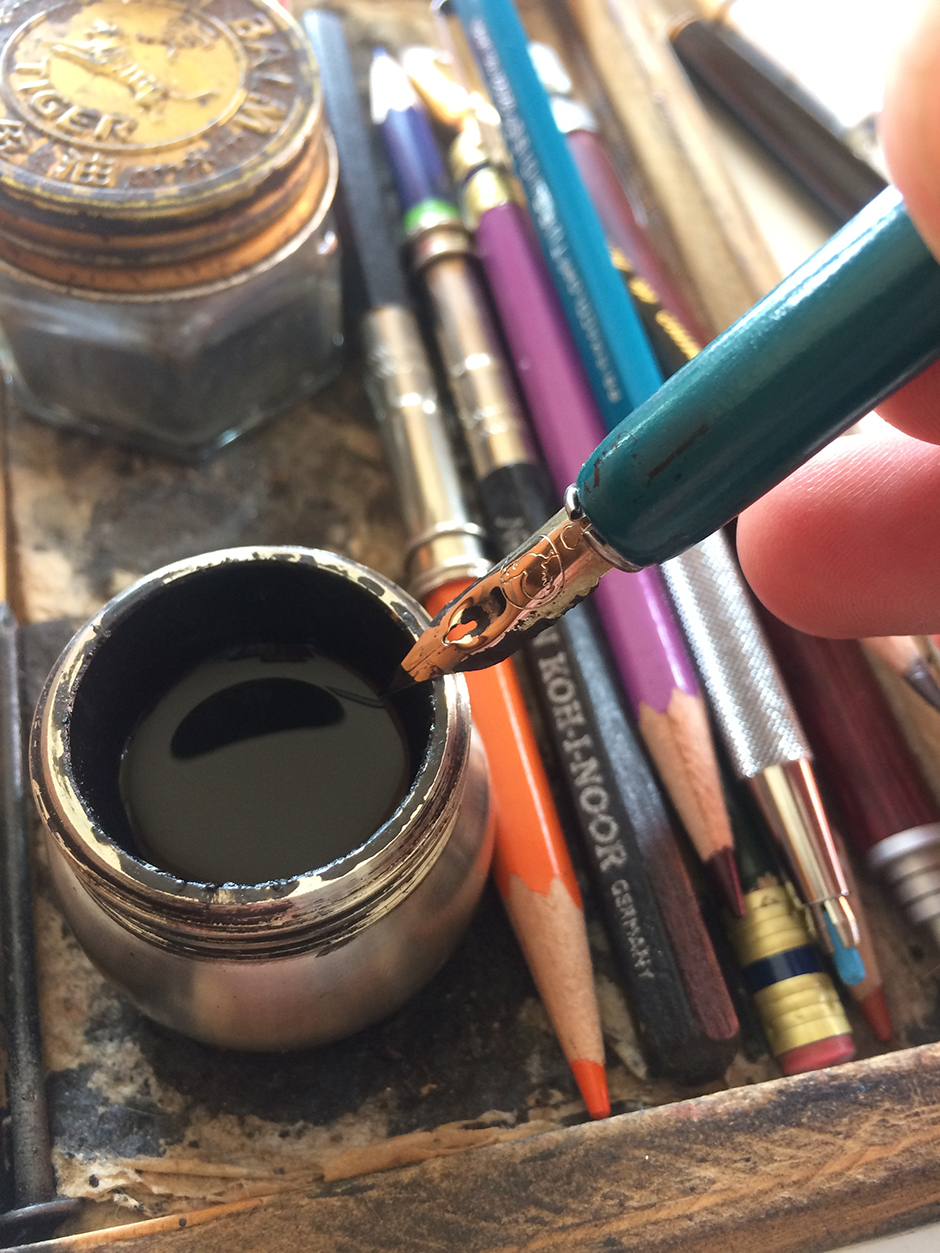Inking Advice
Recently, I’ve been going through the old Famous Artists Course handbooks. If you don’t know, this was an art course first devised in 1948 and it involved teachings by artists like Norman Rockwell, Austin Briggs, and Robert Fawcett. There was also a course designed specifically for cartoonists (you can get pdfs of that course here). I just recently started reading the lessons for this course, and the other day I got to part three, the section on inking, and I encountered the following picture:

It reminded me of my old post about how to hold a dip pen. As you can see, these cartoonists– Al Capp, Milton Caniff, and Rube Goldberg– all hold their pens at a comfortable distance from the nib.
Lesson 3 has a lot of other little pieces of advice about inking and I thought I’d share some of what the lesson says, along with my own insights. Much of what I have learned is from trial-and-error and hopefully I can save you some of the frustration.

One thing I have learned to do is to not ink my nibs too much. Lately, I barely dip the point of my nib into the ink well. I just get enough ink to make a good line or two. In the past what I’ve done, as you can see above, is to run the bottom of the nib against the ink well before I start drawing. This removes excess ink. Why do this? Well, too much ink and you will have ink drops on your paper. Also, an over-inked nib produces a heavier line. And lastly, less ink on the nib helps the longevity of your nibs.

As the Famous Artists Cartoon Course points out, you have to be careful about the surface you are drawing on. Even if your hands are clean, oils from your hands can get onto the page and resist the ink. This is one reason many animators wear gloves. Another idea, and one that I often use, is to have a piece of scratch paper beneath your drawing hand. You have to be careful when you lift up your hand though, or you can send the scratch paper skidding off through your wet ink lines.

As the course also mentions above, it is better to let the ink dry before you draw through it. If it is wet, the the crossing lines will drag some of the wet ink with them, making for dark spots where the lines intersect.

Along the same line (pun intended), you have to ink in a direction that doesn’t take your drawing hand through wet ink. So right-handed artists need to ink left to right. Left-handers, right to left. And if you have pencil lines that you want to erase, make sure the ink is completely dry before you do so. And I use a kneaded eraser when I erase, because, as the course says, it takes away the pencil and not the ink.

Last but not least, it is extremely important to clean your nibs when you are done. I find that water by itself isn’t effective and you always need to be careful with water and metal, since it can lead to rust. So I have a cloth that I use to wipe my nibs with.
Good habits make for a less frustrating drawing experience. If you have any frustration at all, it should come from not being able to make what you are imagining a reality and not from having to fight your tools. Also, good habits will make those tools perform better and last longer. And, as always, this is advice that is intended to help you create. Use what does that and disregard the rest.


